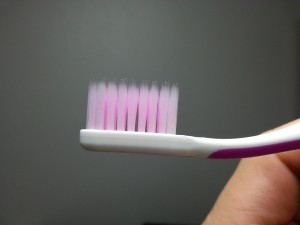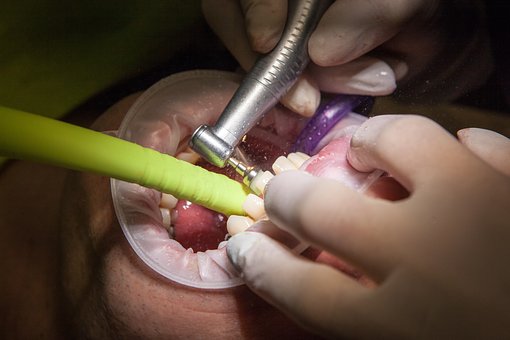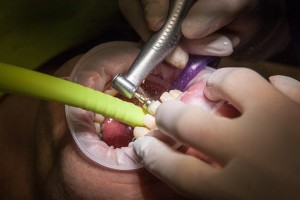 Many parents find it difficult to judge when and how you should begin looking after your child’s teeth. It is never too early to start teaching your child how to look after their teeth and gums, and helping them to understand the importance of a healthy mouth and smile.
Many parents find it difficult to judge when and how you should begin looking after your child’s teeth. It is never too early to start teaching your child how to look after their teeth and gums, and helping them to understand the importance of a healthy mouth and smile.
According to US dental professionals, even before the teeth appear, parents should be paying attention to the soft tissues of a baby’s mouth, and suggest that a soft, clean cloth could be run gently over those tiny gums to remove bacteria and avoid damage to the equally tiny teeth behind them.
When do the first baby teeth appear, and what should we do when they arrive?
Generally speaking, the front teeth appear first – two on the top and two at the bottom – at any time around six months of age. The rest of the baby teeth will gradually appear after that, until the age of around 2 and a half, when all 20 first teeth should be visible.
Very young children often suffer with teething problems as the first teeth break through the gums, resulting in symptoms such as (but not always):
- Red cheeks
- Swollen, painful gums
- Raised temperature
- Dribbling
- Difficulty sleeping
Teething troubles can be eased with cooled teething rings that are widely available at pharmacies across Australia, or by gently massaging the child’s gums.
Brushing should begin as soon as the first tooth appears, with a soft, baby toothbrush and water. Baby toothbrushes are specially designed to be extra soft.
Opinions differ, however, on the use of toothpaste. Some dental professionals are against the use of toothpaste before the age of two, but others recommend a tiny amount of specially-formulated baby toothpaste about the size of a grain of rice. Everyone agrees that swallowing toothpaste should be avoided!
Speak to your own dentist about looking after your child’s teeth, and take your child to the dentist with you. Starting this regular routine early is the key to making sure your child gets off to the right start with dental hygiene.
Why it is important to establish a good routine early for your child’s teeth and gums
The baby teeth are the first teeth your child has, and they form a basis for the second, permanent teeth, which will begin to arrive around the age of six. Although the first teeth will fall out, they still need to be meticulously cleaned and looked after professionally to ensure a healthy set of permanent teeth will follow.
Getting everyone involved in looking after your child’s teeth
Getting young children involved in looking after their teeth and gums is crucial if they are to get on the right road to a healthy smile in later life. It is not always easy to persuade young children to do this, but there are a few tricks you can have up your sleeve to help establish a fun, regular routine, such as:
- Find dental hygiene books and online videos developed especially for kids
- Encourage your child to select their own toothbrush, or choose one in their favourite colour – remember that children’s toothbrushes are specially developed for tiny mouths, so ensure you pick a dedicated baby toothbrush
- Encourage a daily routine of morning brushing after breakfast, and evening brushing before bedtime
- Play a fun or favourite song for two minutes to encourage brushing over a period of time
- Avoid sugary drinks or treats. This is the perfect time to introduce healthy snacks for children that won’t harm their teeth. (have a look at our recent blog post here for some ideas).
- Offer a reward for good dental hygiene
- Do something fun after a dentist appointment
Parents of young children want to make sure cavities are avoided, and looking after your child’s teeth right from the start can give them the perfect grounding for a healthy mouth and smile.
Dental Excel dentists take a fun, holistic approach to children’s dental care, and nothing pleases us more than to teach our young visitors how to look after their teeth and gums. Come and see us with your children, meet our special teddy that helps look after them while they are here, and start your child on the right path to a happy, healthy smile that they can keep for life with Dental Excel.




 Everyone knows that brushing your teeth is an important part of the daily bathroom routine, and you need a toothbrush and paste to do that effectively. With a mind-boggling array of toothbrushes available, however, how do you know you are choosing the right toothbrush to use?
Everyone knows that brushing your teeth is an important part of the daily bathroom routine, and you need a toothbrush and paste to do that effectively. With a mind-boggling array of toothbrushes available, however, how do you know you are choosing the right toothbrush to use? Toothbrush bristles typically fall into three texture categories – hard – medium – soft. For most people, soft bristles are the right choice. This depends upon how vigorous you are when you brush, but hard bristles could damage the soft gingival tissues of the mouth if you are a vigorous brusher, and cause sensitivity.
Toothbrush bristles typically fall into three texture categories – hard – medium – soft. For most people, soft bristles are the right choice. This depends upon how vigorous you are when you brush, but hard bristles could damage the soft gingival tissues of the mouth if you are a vigorous brusher, and cause sensitivity.





